Cannabis, a plant known for its psychoactive properties, has gained significant popularity in recent years for both recreational and medicinal purposes. However, many users are often left wondering about the shelf life and storage of this intriguing plant. How long can cannabis be stored before it starts to degrade in quality?
This article aims to provide expert insights into the factors affecting cannabis storage, best practices for storing cannabis, the shelf life of different cannabis products, signs of cannabis degradation, and ways to extend the lifespan of stored cannabis.
When it comes to storing cannabis, several factors come into play. Temperature, humidity, light exposure, and proper packaging all play crucial roles in preserving the quality and potency of cannabis over time. Understanding these factors and following best storage practices can ensure that your cannabis maintains its freshness and efficacy for as long as possible.
Different cannabis products have varying shelf lives, with factors like extraction methods, packaging, and storage conditions influencing their longevity. By being aware of these factors and signs of degradation, cannabis enthusiasts can make informed decisions about their storage methods and ensure they get the most out of their cannabis products.
Factors Affecting Cannabis Storage
Optimal temperature for cannabis storage is typically between 60 to 70 degrees Fahrenheit (15 to 21 degrees Celsius). Storing cannabis at temperatures higher than this can lead to the degradation of cannabinoids and terpenes, the compounds responsible for the plant’s therapeutic effects and aroma.
On the other hand, storing cannabis at temperatures lower than the optimal range can cause the trichomes, which contain cannabinoids and terpenes, to become brittle and break off, reducing the potency of the product.
The importance of proper packaging for cannabis storage cannot be overstated. Cannabis should be stored in airtight containers that are opaque and resistant to light. Exposure to light can degrade the cannabinoids and terpenes, causing the product to lose its potency. Opaque containers help to prevent this degradation by blocking out light.
Airtight containers also help to maintain the ideal humidity level for cannabis storage, which is around 59 to 63 percent. Too much moisture can lead to the growth of mold and mildew, while too little moisture can cause the cannabis to become dry and lose its potency.
Best Practices for Storing Cannabis
To ensure optimal preservation, it’s essential to follow these best practices for storing your cannabis. Properly sealing your cannabis is crucial to maintain its freshness and potency.
When storing cannabis, it’s important to use airtight containers, such as glass jars with rubber seals, to prevent air and moisture from entering. This helps to preserve the terpenes, cannabinoids, and overall quality of the cannabis.
Additionally, storing cannabis in a cool, dark place can further protect it from degradation caused by light and heat.
Controlling humidity is another important factor in storing cannabis. High humidity levels can lead to mold and mildew growth, which can ruin the cannabis. On the other hand, low humidity levels can cause the cannabis to become dry and brittle, resulting in a harsh smoking experience.
The ideal humidity range for storing cannabis is between 59% and 63%. To achieve this, you can use humidity packs or humidors specifically designed for cannabis storage. These products help to maintain a consistent humidity level, ensuring that your cannabis stays in optimal condition.
By properly sealing and controlling humidity, you can extend the shelf life of your cannabis and maintain its quality for a longer period of time. Following these best practices will help you enjoy the full potential of your cannabis, whether you’re using it for medicinal or recreational purposes.
Shelf Life of Different Cannabis Products
You’ll want to keep in mind the shelf life of various cannabis products. The optimal storage conditions for cannabis can greatly affect its longevity.
When it comes to flower, the shelf life can vary depending on factors such as moisture content, temperature, and exposure to light. Properly stored flower can typically last anywhere from 6 months to a year. To ensure the longest shelf life, it’s recommended to store flower in an airtight container in a cool, dark place. This helps to preserve its potency and flavor over time.
In contrast, concentrates generally have a longer shelf life than flower. Concentrates such as wax, shatter, and oils can last up to a year or even longer if stored properly. Similar to flower, concentrates should be stored in a cool, dark place to prevent degradation. However, it’s important to note that concentrates can become more difficult to work with as they age, as they may become stickier or harder to handle. It’s also crucial to keep concentrates away from excessive heat, as this can cause them to melt or lose their potency.
Signs of Cannabis Degradation
If stored improperly, cannabis can lose its potency and develop a stale or musty smell. The effects of improper storage on cannabis quality can be significant.
When exposed to excessive heat, light, or moisture, cannabinoids, which are the compounds responsible for the psychoactive effects of cannabis, can degrade over time. This can result in a decrease in potency, making the cannabis less effective for its intended purposes.
Also, improper storage can lead to mold and mildew growth on the cannabis. Detecting mold and mildew in stored cannabis is crucial to ensure its safety and quality. Mold and mildew can thrive in environments with high humidity levels, and cannabis that is not stored in a cool, dry place can be susceptible to these issues.
Signs of mold and mildew include a fuzzy or powdery appearance on the cannabis buds, a damp or musty smell, and a change in color. Mold can also produce mycotoxins, which are toxic substances that can be harmful if ingested. Therefore, scrutinize the cannabis for any signs of mold or mildew before consuming it. If any signs are detected, it’s advisable to discard the cannabis to avoid any potential health risks.
Does the Storage Length for Cannabis Differ Between Hemp and Marijuana?
Yes, the storage length for cannabis does differ between hemp and marijuana. Hemp has a longer shelf life than marijuana due to its lower THC content. Proper storage in an airtight container in a cool, dark place can help maintain the quality and potency of both types of cannabis. Understanding the difference between hemp marijuana can help consumers make informed decisions about storage and usage.
Extending the Lifespan of Stored Cannabis
Extend the lifespan of your stored cannabis by implementing proper storage techniques. Optimal storage conditions are essential for preserving the quality and potency of your cannabis over an extended period of time.
The two main factors to consider when storing cannabis are temperature and humidity. To maintain optimal storage conditions, it’s recommended to store cannabis in a cool and dark place with temperatures ranging between 60-70 degrees Fahrenheit (15-21 degrees Celsius). Excessive heat can cause the cannabinoids in cannabis to degrade, leading to a decrease in potency. Similarly, exposure to light can also degrade the cannabinoids, so store cannabis in a dark environment.
In addition to temperature and light, humidity levels play a crucial role in preserving the quality of stored cannabis. Storing cannabis in a humidity-controlled environment is ideal, as excessive moisture can lead to the growth of mold and mildew, while low humidity can cause the buds to become dry and brittle. The ideal humidity range for storing cannabis is between 59-63%.
Choosing the right storage containers is also important in extending the lifespan of your stored cannabis. It’s recommended to use airtight containers made of glass or metal, as they provide a better seal and prevent air and moisture from entering. Plastic containers should be avoided, as they can create static and attract trichomes, which contain the valuable cannabinoids and terpenes. Additionally, it’s advisable to avoid storing cannabis in bags or packaging that can easily be crushed, as this can damage the buds and reduce their quality.
Conclusion
The storage of cannabis is a critical factor in maintaining its potency and quality over time. Factors such as temperature, humidity, light exposure, and air circulation can significantly impact the shelf life of cannabis products. It’s crucial to store cannabis in a cool and dark place, preferably in airtight containers, to minimize degradation.
Proper storage practices, such as using glass jars or vacuum-sealed bags, can help preserve the cannabinoids and terpenes present in cannabis, ensuring a more potent and enjoyable experience. Additionally, avoiding excessive handling and exposure to oxygen can prevent the loss of potency and flavor.
Different cannabis products have varying shelf lives, with flower typically having a shorter lifespan compared to concentrates or edibles. It’s essential to familiarize oneself with the specific storage requirements for each product to maximize its shelf life. Signs of degradation, such as changes in color, texture, or aroma, can indicate that the cannabis isn’t fresh anymore and may have lost its potency.
By following best practices for cannabis storage, individuals can extend the lifespan of their stored cannabis, allowing them to enjoy its benefits for a longer period. As with any scientific endeavor, precision and expertise in cannabis storage are crucial to maintaining the integrity of the product. With proper knowledge and care, individuals can ensure their cannabis remains fresh, potent, and enjoyable for as long as possible.

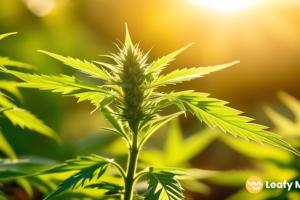
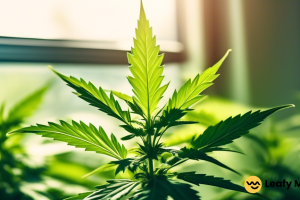





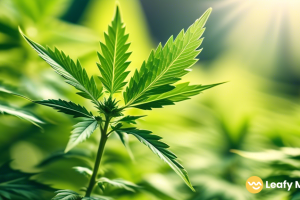
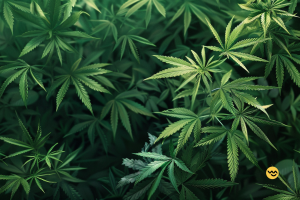
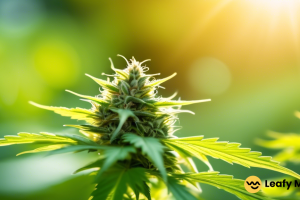
Leave a Reply